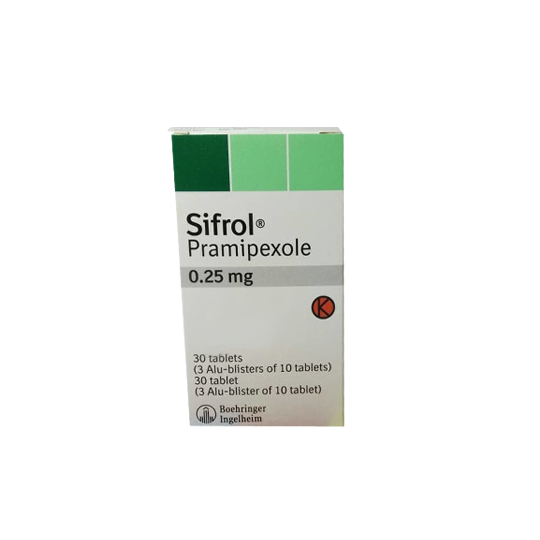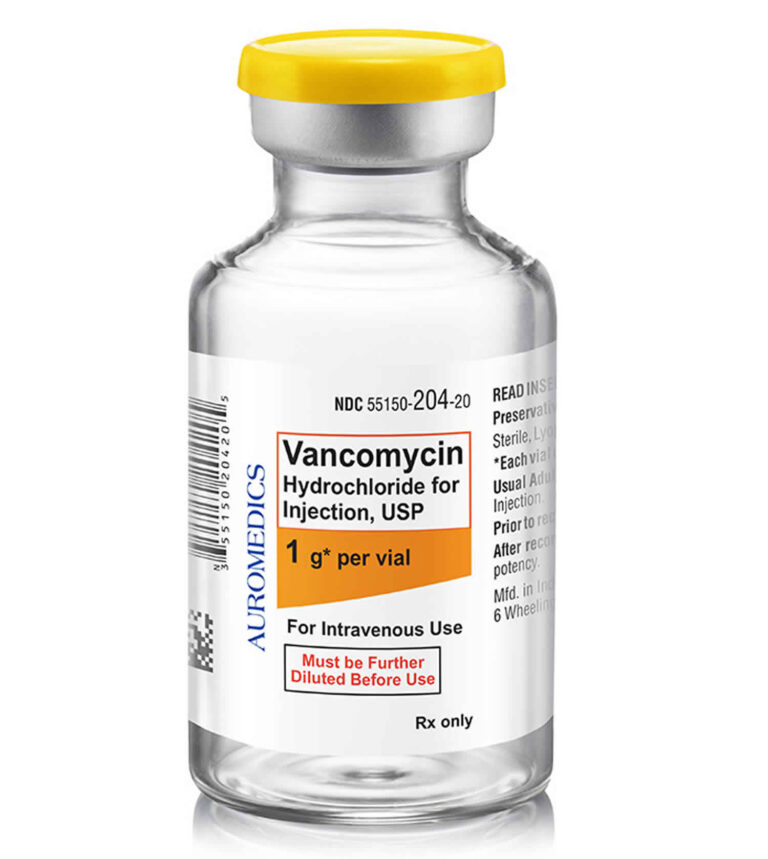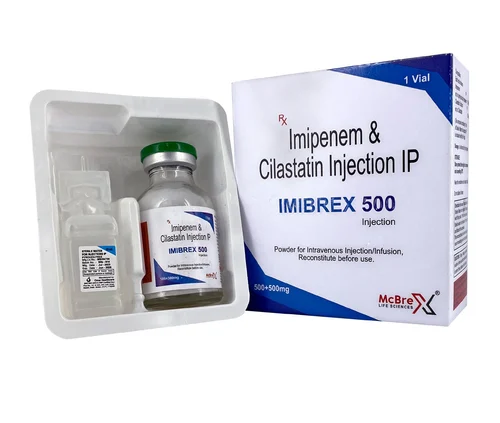
Pramipexole, with its popular brand name Sifrol, is a drug used to treat various neurological and movement disorders. This article will provide a detailed overview of pramipexole, including its drug class, uses, mechanism of action (MOA), side effects, drug interactions, contraindications, popular brand names, and special instructions for users.
Drug Class
Pramipexole belongs to the dopamine agonist class of drugs. Dopamine agonists are substances that stimulate dopamine receptors in the brain and thus promote the effects of the neurotransmitter dopamine.
Uses of Pramipexole (Sifrol)
It is used for the following diseases and conditions.
-
Parkinson’s Disease
Pramipexole’s use is for Parkinson’s disease, a neurodegenerative disorder characterized by tremors, stiffness, slowness of movement, and balance issues. By stimulating dopamine receptors in the brain it helps to improve symptoms of the disease.
-
Restless Legs Syndrome (RLS)
Pramipexole is also indicated for the treatment of restless legs syndrome. RLS is a condition that makes individuals move their legs after restless feelings and uncomfortable sensations. This medicine helps to treat these symptoms by improving the dopamine system.
-
Other Uses
Occasionally, Pramipexole has also some other other uses such as for depression, fibromyalgia, and periodic limb movement disorder.
Mechanism of Action (MOA)
Pramipexole binds to the dopamine D2-like receptors (including D2, D3, and D4 receptors) in the brain and stimulates these to increase the effect of dopamine. Dopamine neurotransmitter has a role in controlling movement, mood, and other functions. In conditions like Parkinson’s disease, there is a significant loss of dopamine-producing neurons. Thus, it stimulates dopamine to improve the disease symptoms.
Side Effects of Pramipexole
Common and serious side effects of pramipexole are:
Common Side Effects
- Drowsiness and Fatigue
Many users experience sleepiness, fatigue, or sedation, which can impact daily activities. - Dizziness or Light-headedness
It can cause dizziness or a feeling of being lightheaded by acting on central nervous symptoms. - Nausea
Nausea is common at the start of treatment or if we increase the dosage. - Swelling (Edema)
You may have swelling in your hands, feet, or legs. - Headache
Headaches in the initial phases of therapy.
Serious Side Effects
- Hallucinations
- Impulse Control Disorders
- Orthostatic Hypotension
- Sleep Attacks
Drug Interactions of pramipexole
Some notable interactions of pramipexole include
- Antipsychotic Drugs
Some medications of this class can block dopamine receptors such as haloperidol or clozapine. - CNS Depressants
drugs like benzodiazepines or alcohol with pramipexole may increase the sedative effects that results in excessive drowsiness or dizziness. - Antihypertensive Drugs
It may potentiate the effects of antihypertensive medications, that results in hypertension. - Cimetidine
This drug can increase pramipexole levels in the body. Thus, it increases the therapeutic and side effects of the drug.
Contraindications
Pramipexole has following contraindications.
- Hypersensitivity
If you are allergic to pramipexole or any of its components, avoid this drug. - Severe Renal Impairment
Its excretion is through kidneys, so those with severe kidney disease (e.g., creatinine clearance < 30 mL/min) patients need dose adjustments or an alternative treatment. - Pregnancy and Lactation
Pramipexole is not recommended during pregnancy unless the benefits are more than the risks. It is also excreted in breast milk, so nursing mothers should avoid it.
Special Instructions for Users
Dosage and Administration
-
- Take it according to the prescription. Starting doses are typically low, with gradual increases to minimize side effects.
- It is usually taken once or several times per day, depending on the condition treated.
- Avoid Sudden Discontinuation because it can lead to withdrawal symptoms or worsening of symptoms, particularly in Parkinson’s disease.
- Monitor regularly with impaired renal function.
- Avoid Driving or Operating Heavy Machinery because It has sedative effects.
Popular Brand Names of Pramipexole
| Brand Name | Strength | Form | Indications |
| Sifrol | 0.088 mg, 0.18 mg, 0.35 mg, 0.7 mg | Tablets | Parkinson’s disease, RLS |
| Mirapex | 0.125 mg, 0.25 mg, 0.5 mg, 1 mg, 1.5 mg | Tablets | Parkinson’s disease, RLS |
| Pramipex | 0.125 mg, 0.25 mg, 0.5 mg, 1 mg | Tablets | Parkinson’s disease, RLS |
| Pramipexole Teva | 0.088 mg, 0.18 mg, 0.35 mg, 0.7 mg | Tablets | Parkinson’s disease, RLS |
Conclusion
Thus, Pramipexole (Sifrol) is a very appropriate treatment for Parkinson’s disease and restless legs syndrome. While it offers significant benefits in improving motor function. However, it is essential to acknowledge its potential side effects, interactions, and contraindications. Always ensure regular monitoring and adhere to the prescribed dosage for the safe and effective use of this medication. Always consult a healthcare professional when you start or want to adjust the dose of pramipexole.




